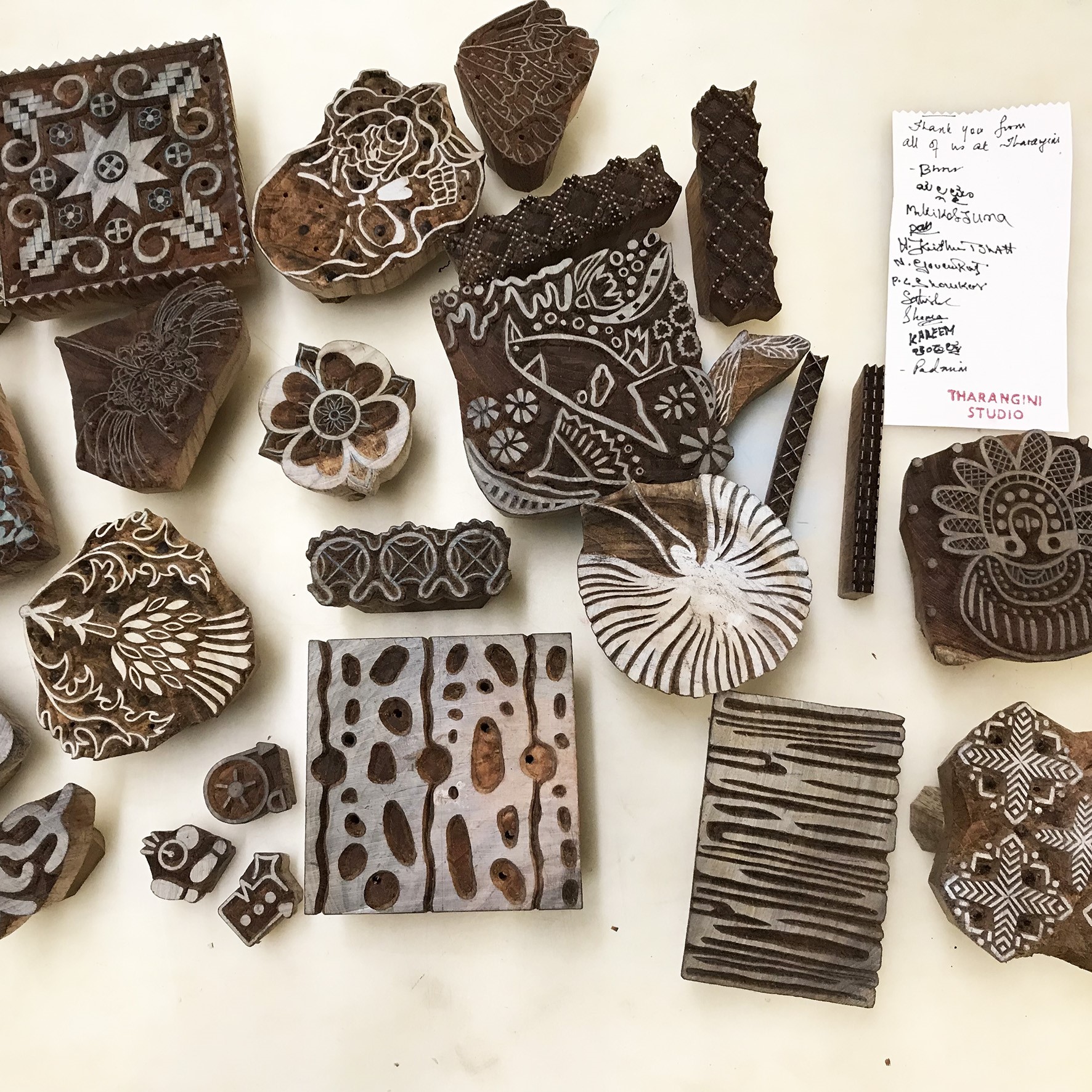Post-COVID craft education
Reflections on a virtual artisan woodblock studio exchange between Australia and India
DOI:
https://doi.org/10.7577/formakademisk.5417Keywords:
Tangible and intangible knowledge,, artisan craft, online global studio, cross-cultural exchangeAbstract
This paper presents a hybrid model of teaching and learning that proposes new possibilities for exchanging tangible and intangible cross-cultural knowledge in textile craft education. The paper aims to demonstrate how online platforms can be used creatively to disseminate traditional craft knowledge and skills in new ways. The discussion centres on a unique virtual global studio between fashion and textile undergraduate students at the University of Technology Sydney and on an artisanal woodblock print studio, Tharangini, based in Bengaluru (Bangalore), India. The hybrid workshop was an adaptation of the studio in response to travel restrictions caused by the pandemic. The author argues that while the internet cannot replace the immersive cultural experience of studying in another country, digital platforms have a place alongside teaching to offer otherwise impossible opportunities. This paper explores a methodology for disseminating craft knowledge and skills across cultures through a combination of online and in-house practicum. Classes were structured around weekly Zoom sessions with Director Padmini Govind, where sustainable approaches to print production were disseminated through a suite of commissioned films and hand-carved woodblocks to explore on campus. The results show how this unique adaptation allowed students to interact with the artisan craft of woodblock printing in rich and varied ways, and it proposes that this novel hybrid model can be creatively adapted to future craft education in the 2020s.
References
Benvenuit, S., Heikkinen S., Ip, T., & Younis, Z. (2017). Introduction to authentic learning-environments, experiences and field work. In A. Horsted, C. Nygard, J. Branch, & S. Hayes (Eds.), Innovative teaching and learning in higher Education (pp. 269–282). Libri Publishing.
Brown, J. S., Collins, A., & Duguid, P. (1989). Situated cognition and the culture of learning. Educational Researcher, 18(1), 32¬–42. https://doi.org/10.3102/0013189X018001032
Carter, P. (2004). Material thinking. Melbourne University Press.
Clifton-Cunningham, A., & Heffer, C. (2022). Crossing the cultural aisle from Australia to India: Transforming studio learning through artisan textile workshops. In W. Pangle, K. Stanley-Bohn, A. Dasen, J. Batzner, & H. Trommer-Beardslee (Eds.), Removing the educational silos: Models of interdisciplinary and multi-disciplinary education (pp. 127–146, 1st ed.). Intellect Books.
Dormer, P. (1997). The language and practical philosophy of craft. In P. Dormer (Ed.), The culture of craft (pp. 219–230). Manchester University Press.
Dhasmana, S. (2023, April 4-5). Restoring artisan esteem [Conference presentation]. In 25th Annual IFFTI Conference 2023, Otago Museum, New Zealand.
Ingold, T. (2007). Lines, a brief history. Routledge. https://doi.org/10.4324/9780203961155
Lantry, J. (2015). Artisan culture: Rethinking sustainability through collaborative exchange between emerging Australian designers and Indian artisans in fashion and textiles [Unpublished master’s thesis]. University of Technology Sydney.
Lee, Y. (2020). Surface and apparition: The immateriality of modern surface. Bloomsbury Press. https://doi.org/10.5040/9781350130470
Omotoso, M. (2023, February 1). Who made my clothes movement how it began. Fashion Insiders & Co. https://fashioninsiders.co/features/inspiration/who-made-my-clothes-movement/.
Schön, D. A. (1983). The reflective practitioner: How professionals think in action. Routledge.
Sennett, R. (2008). The craftsman. Yale University Press.
Vaughan, L. (Ed.). (2017). Practice-based design research. Bloomsbury. https://doi.org/10.5040/9781474267830

Downloads
Published
How to Cite
Issue
Section
License
Copyright (c) 2023 Cecilia Heffer

This work is licensed under a Creative Commons Attribution-NoDerivatives 4.0 International License.
Authors who publish with this journal agree to the following terms:
- Authors retain copyright and grant the journal right of first publication with the work simultaneously licensed under a Creative Commons Attribution 4.0 License that allows others to share the work with an acknowledgement of the work's authorship and initial publication in this journal.
- Authors are able to enter into separate, additional contractual arrangements for the non-exclusive distribution of the journal's published version of the work (e.g., post it to an institutional repository or publish it in a book), with an acknowledgement of its initial publication in this journal.
- Authors are permitted and encouraged to post their work online (e.g., in institutional repositories or on their website) prior to and during the submission process, as it can lead to productive exchanges, as well as earlier and greater citation of published work (See The Effect of Open Access).
- The author(s) must manage their economic reproduction rights to any third party.
- The journal makes no financial or other compensation for submissions, unless a separate agreement regarding this matter has been made with the author(s).
- The journal is obliged to archive the manuscript (including metadata) in its originally published digital form for at least a suitable amount of time in which the manuscript can be accessed via a long-term archive for digital material, such as in the Norwegian universities’ institutional archives within the framework of the NORA partnership.
The material will be published OpenAccess with a Creative Commons 4.0 License which allows anyone to read, share and adapt the content, even commercially under the licence terms:
This work needs to be appropriately attributed/credited, a link must be provided to the CC-BY 4.0 licence, and changes made need to be indicated in a reasonable manner, but not in any way that suggests that the licensor endorses you or your use.



